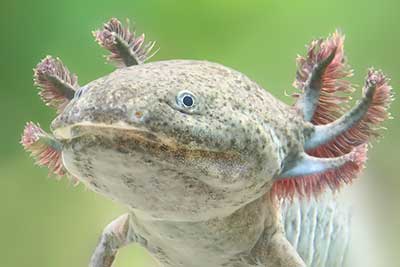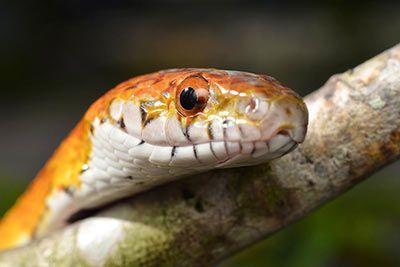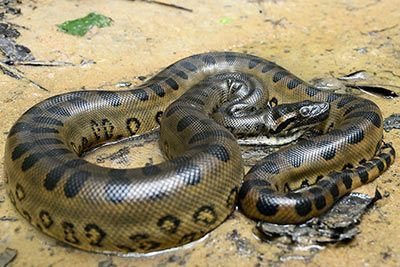Black Mamba
Black Mamba Facts
| Size | 8-15 ft (2.5-4.5 m) |
| Speed | Up to 15 mph (24 km/h) (short distances) |
| Weight | Up to 3.5 lb (1.6 kg) |
| Lifespan | Up to 11 years |
| Food | Small rodents, birds |
| Predators | Crocodiles, jackals |
| Habitat | East Africa |
| Class | Reptiles |
| Order | Scaled reptiles |
| Family | Elapidae |
| Scientific name | Dendroaspis polylepis |
| Characteristics | Longest venomous snake in Africa |
Main Characteristics
The black mamba is a venomous snake. It usually grows to a length of 8 feet (2.5 meters), but can also reach a length of 15 feet (4.5 meters). The black mamba is the longest venomous snake in Africa.
Origin
How Did the Black Mamba Get Its Name?
The term “black mamba” is confusing, because the body of the snake is not black but olive-green to grey. The term comes from the blue-black color in its mouth, which becomes visible during an attack.
Habitat
Where Do Black Mambas Live?
Most mambas live in trees and sometimes like to sleep under the roof of a house or in a barn. Although you might think their home would be the rainforest, they live in savannas, in scrublands and rocky areas.
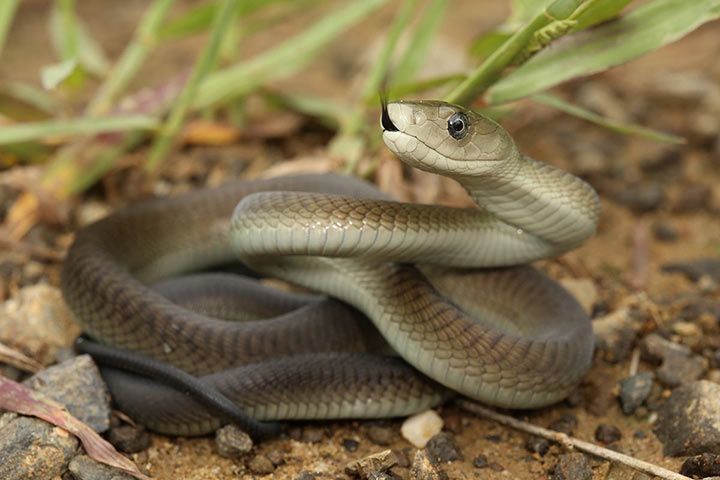
Behavior
The Most Dangerous Snake Worldwide
The black mamba is categorized as the most dangerous snake in the world. It is very fast, its venom often lethal, it is fundamentally nervous and very aggressive when feeling threatened.
Are Black Mambas Aggressive?
Black mambas are shy (!) and prefer to escape instead of getting involved in a fight. But if they feel threatened they are going to attack rather aggressively. They lift their head, so that up to one third of their entire body stands bolt upright, they spread their cobra-like neck-flap, open their black mouth and hiss. If an attacker retreats slowly, the black mamba also escapes. If the attacker does not move away und continues to harass the snake, it will bite.
How Do Black Mambas Kill Their Prey
Contrary to other snakes, black mambas do not bite just once but several times. They focus on the body or the head and attack up to 12 times. Their eyesight helps them to recognize enemies and prey by their sudden movements.
The Venom
How Strong Is Black Mamba Venom?
The black mamba is a passionate poisoner. It does not only produce neurotoxins (toxine = venom), which harm the nervous system, but also cardiotoxins, which affect the heart. Up to 0.014 oz (400 mg) of venom are being transferred into wound per bite. 0.0005-0.0007 oz (15-20 mg) are enough to kill an adult person.
In the past, the bite of the black mamba was always fatal and the victim died within 20 minutes. Today it is possible to treat a bite with a specific antidote. Yet, in poor rural areas, where you can often find the black mamba, the antidote is often rare or not available in time.
How Does the Venom Work?
People who have been bitten by a mamba, first feel a tingling feeling in their mouths and in the limbs, see double or suffer from tunnel vision. They are confused, develop a fever, foam comes out of their mouths and noses, and they lose control of their muscles. If the bite is not medically treated, the patients will suffer from severe sickness, shock, spasms and finally die.
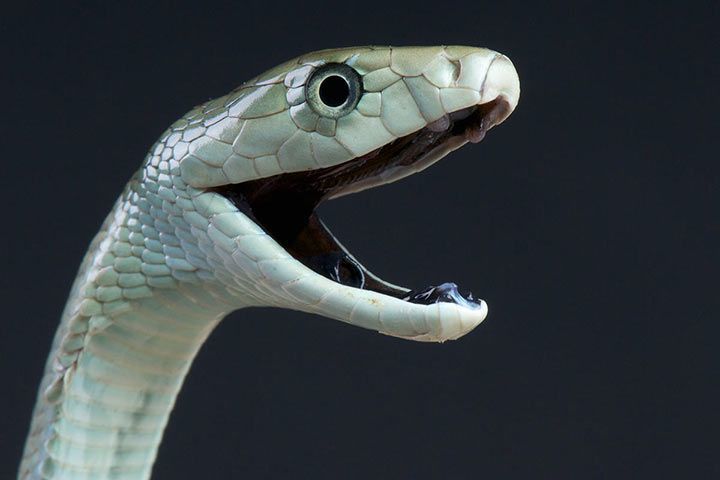
Senses and Abilities
Can You Outrun a Black Mamba?
Black mambas can reach speeds of up to 12 mph (20 km/h), sometimes even 15 mph (24 km/h). You would have to sprint like an athlete in a 328 feet (100 meters) dash to be able to escape. Yet the snake does not crawl at this speed to hunt for prey, but to get away from enemies.
Anatomy and Appearance
Different to many other venomous snakes, black mambas have round pupils.
- Find Out More:
- Corn Snake Facts
- Green Anaconda Facts
- Rattlesnake Facts
- More About Venomous Animals:
- Venomous Mammals
- Animals That Use Spikes and Spines as Tools
- The Most Poisonous Animals
- Venomous Animals in Germany
- The Most Dangerous Venomous Snakes: Asia
- The Most Dangerous Venomous Snakes: Africa
- The Most Dangerous Venomous Snakes: Australia/New Guinea
- The Most Dangerous Venomous Snakes: Central and South America







